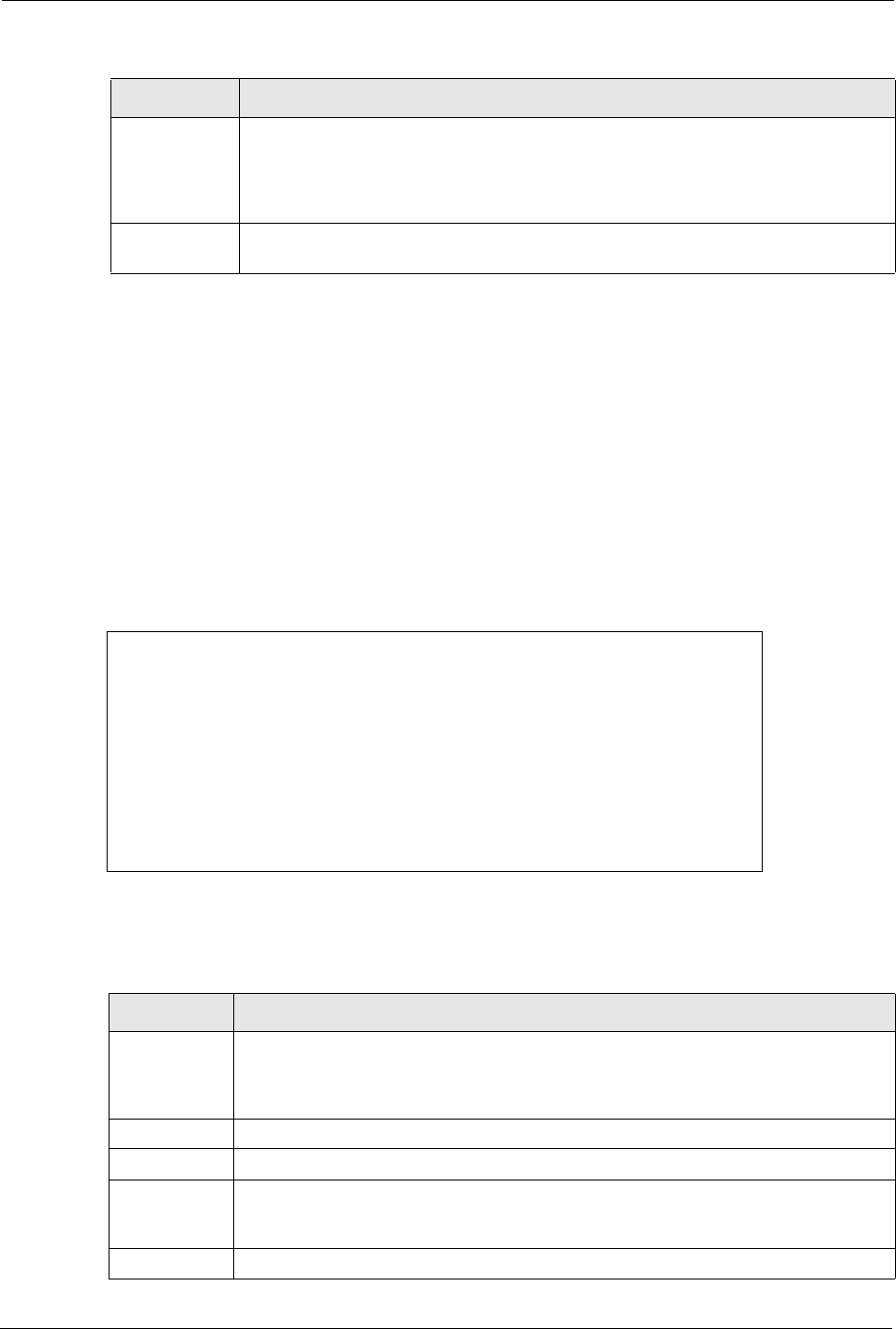P-2302R Series VoIP Station Gateway User's Guide
Table Of Contents
- P-2302R Series
- User’s Guide
- Copyright
- Federal Communications Commission (FCC) Interference Statement
- Safety Warnings
- ZyXEL Limited Warranty
- Customer Support
- Table of Contents
- List of Figures
- List of Tables
- Preface
- Introducing the Prestige
- Introducing the Web Configurator
- Wizard Setup
- System Screens
- LAN Setup
- WAN Screens
- Introduction to VoIP
- VoIP Screens
- Phone
- Phone Book
- Phone Usage
- Network Address Translation (NAT) Screens
- Static Route
- Firewall
- Content Filtering
- Remote Management Screens
- Universal Plug-and-Play (UPnP)
- Logs
- Bandwidth Management
- 19.1 Bandwidth Management Overview
- 19.2 Bandwidth Classes and Filters
- 19.3 Proportional Bandwidth Allocation
- 19.4 Application-based Bandwidth Management
- 19.5 Subnet-based Bandwidth Management
- 19.6 Application and Subnet-based Bandwidth Management
- 19.7 Scheduler
- 19.8 Maximize Bandwidth Usage
- 19.9 Bandwidth Borrowing
- 19.10 Configuring Summary
- 19.11 Configuring Class Setup
- 19.12 Configuring Monitor
- Maintenance
- Introducing the SMT
- General Setup
- WAN Setup
- LAN Setup
- Internet Access
- Remote Node Configuration
- Static Route Setup
- Network Address Translation (NAT)
- Enabling the Firewall
- Filter Configuration
- SNMP Configuration
- System Information and Diagnosis
- Firmware and Configuration File Maintenance
- 33.1 Filename Conventions
- 33.2 Backup Configuration
- 33.2.1 Backup Configuration
- 33.2.2 Using the FTP Command from the Command Line
- 33.2.3 Example of FTP Commands from the Command Line
- 33.2.4 GUI-based FTP Clients
- 33.2.5 TFTP and FTP over WAN Management Limitations
- 33.2.6 Backup Configuration Using TFTP
- 33.2.7 TFTP Command Example
- 33.2.8 GUI-based TFTP Clients
- 33.3 Restore Configuration
- 33.4 Uploading Firmware and Configuration Files
- System Maintenance
- Remote Management
- Call Scheduling
- Troubleshooting
- 37.1 Problems Starting Up the Prestige
- 37.2 Problems with the LAN Interface
- 37.3 Problems with the WAN Interface
- 37.4 Problems with Internet Access
- 37.5 Problems with the Password
- 37.6 Problems with the Web Configurator
- 37.7 Problems with a Telephone or the Telephone Port
- 37.8 Problems with Voice Service
- 37.9 Pop-up Windows, JavaScripts and Java Permissions
- Product Specifications
- Wall-mounting Instructions
- Setting up Your Computer’s IP Address
- IP Subnetting
- PPPoE
- Triangle Route
- SIP Passthrough
- Index

P-2302R Series User’s Guide
263 Chapter 28 Network Address Translation (NAT)
Note: You must press [ENTER] at the bottom of the screen to save the whole set.
You must do this again if you make any changes to the set – including deleting
a rule. No changes to the set take place until this action is taken
Selecting Edit in the Action field and then selecting a rule brings up the following menu,
Menu 15.1.1.1
- Address Mapping Rule in which you can edit an individual rule and
configure the Type, Local and Global Start/End IPs.
Note: An End IP address must be numerically greater than its corresponding IP Start
address
Figure 131 Menu 15.1.1.1 Editing/Configuring an Individual Rule in a Set
The following table explains the fields in this menu.
Action The default is Edit. Edit means you want to edit a selected rule (see following field).
Insert Before means to insert a rule before the rule selected. The rules after the
selected rule will then be moved down by one rule. Delete means to delete the
selected rule and then all the rules after the selected one will be advanced one rule.
None disables the Select Rule item.
Select Rule When you choose Edit, Insert Before or Delete in the previous field the cursor jumps
to this field to allow you to select the rule to apply the action in question.
Menu 15.1.1.1 Address Mapping Rule
Type= One-to-One
Local IP:
Start=
End = N/A
Global IP:
Start=
End = N/A
Press ENTER to Confirm or ESC to Cancel:
Table 112 Menu 15.1.1.1 Editing/Configuring an Individual Rule in a Set
FIELD DESCRIPTION
Type Press [SPACE BAR] and then [ENTER] to select from a total of five types. These are
the mapping types discussed in the chapter on NAT web configurator screens. Server
allows you to specify multiple servers of different types behind NAT to this computer.
See Section 28.5 on page 265 for examples.
Local IP Only local IP fields are N/A for server; Global IP fields MUST be set for Server.
Start This is the starting local IP address (ILA).
End This is the ending local IP address (ILA). If the rule is for all local IPs, then put the
Start IP as 0.0.0.0 and the End IP as 255.255.255.255. This field is N/A for One-to-
One and Server types.
Global IP
Table 111 Menu 15.1.1 First Set
FIELD DESCRIPTION










